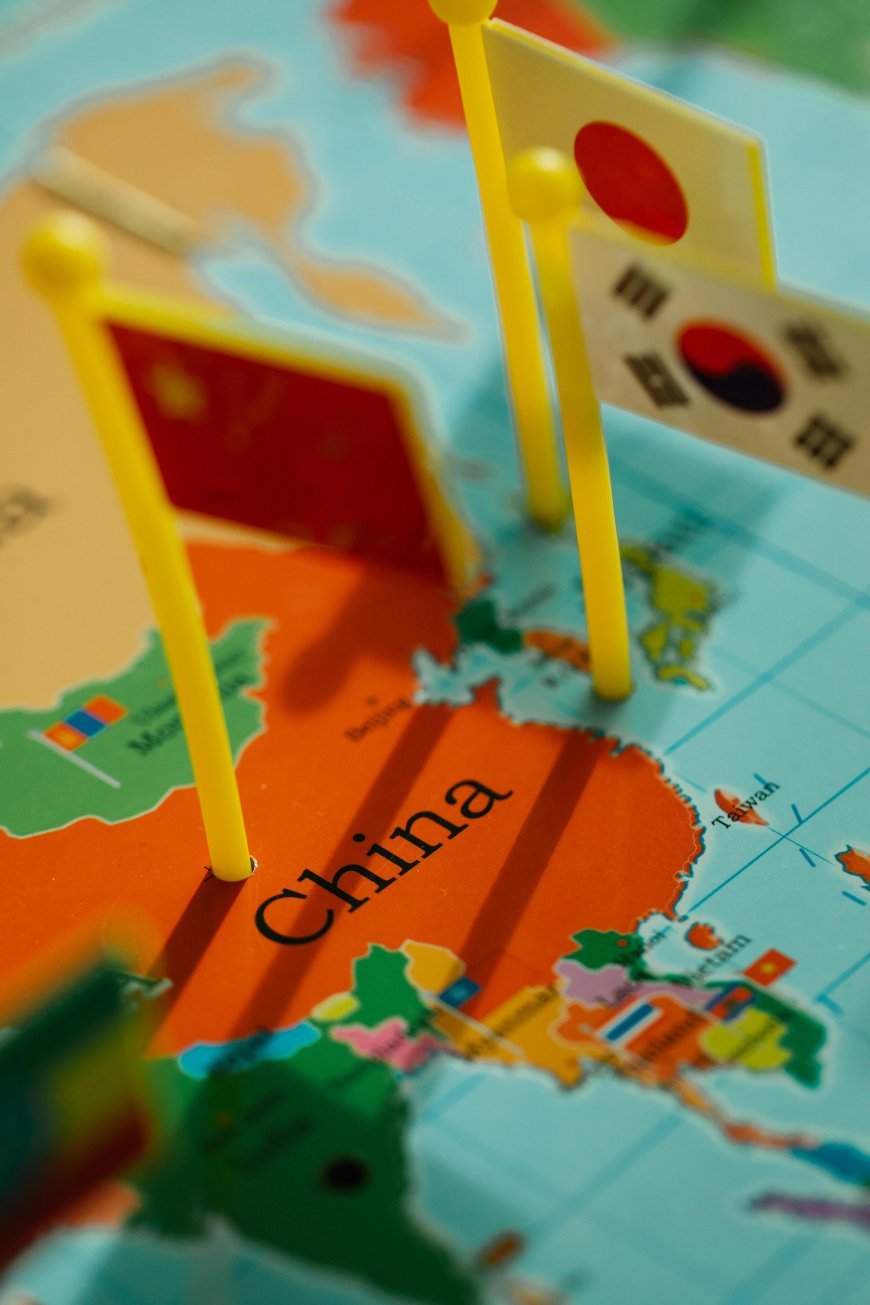China and India Urged to Partner, Not Compete
China’s foreign minister Wang Yi says Beijing and New Delhi should seek partnership over rivalry, signaling a new chapter in Asia’s power dynamics.

The call came with striking clarity. Standing before a gathering of diplomats, Chinese Foreign Minister Wang Yi declared that Beijing and New Delhi should look beyond rivalry and embrace partnership. His words underscored a truth that has long simmered beneath the surface: the destinies of Asia’s two giants are deeply intertwined, whether as adversaries or allies.
Wang’s appeal was more than diplomatic nicety. It reflected Beijing’s recognition that at a time of global turbulence—geopolitical shifts, fragile supply chains, and climate pressures—China and India face both immense risks and untapped opportunities. The message was simple: cooperation could make them engines of global stability, while competition could lock them into endless conflict.
A History of Complicated Relations
The notion of China and India joining hands may sound idealistic against the backdrop of their difficult past. The two countries fought a border war in 1962, and their Himalayan frontier remains disputed. More recently, deadly clashes in Ladakh in 2020 reminded the world of how quickly tensions can flare.
Beyond territorial disputes, Beijing and New Delhi often find themselves competing for influence in South Asia, the Indo-Pacific, and global institutions. India has grown closer to the United States through the Quad partnership, while China has deepened ties with Russia and expanded its Belt and Road Initiative.
And yet, despite these differences, both nations are bound by geography, demography, and economics. Together, they represent more than a third of humanity and rank among the world’s fastest-growing economies. Their choices ripple far beyond Asia, shaping markets, supply chains, and the global climate agenda.

The Strategic Case for Partnership
Wang Yi’s message highlights an emerging reality: neither China nor India can achieve its ambitions in isolation.
- Economic scale: Combined, they account for nearly $30 trillion in projected GDP by 2030. Collaboration in trade and technology could rival Western economic blocs.
- Energy security: Both nations are heavily dependent on imported energy. Joint investments in renewables and infrastructure could reduce vulnerabilities.
- Climate leadership: As two of the largest carbon emitters, cooperation on clean energy and climate policy is not optional—it is essential.
- Global governance: In institutions from the G20 to the United Nations, China and India’s voices carry increasing weight. Speaking in unison could tilt the balance of global decision-making.
For Wang, the pitch is clear: partnership is not about erasing differences, but about finding pragmatic common ground.
A New Chapter or Familiar Rhetoric?
Observers remain cautious. Beijing’s outreach often raises questions about intent. Some Indian policymakers view Wang’s remarks as tactical, designed to ease tensions while China consolidates influence elsewhere. Others argue that India, wary of overdependence on either China or the West, may see strategic value in selective cooperation.
What is undeniable is that both nations face pressing domestic priorities. China grapples with slowing growth, property market turmoil, and an aging population. India, meanwhile, is striving to sustain its rapid expansion while managing inequality and unemployment. For both governments, pragmatic cooperation may offer economic dividends that outright competition cannot.
Storytelling Section: The Human Cost of Rivalry
In the Ladakh region, where icy winds sweep across the Himalayas, villagers live with the uncertainty of great-power rivalry. Many recall nights when soldiers clashed in the dark, and families huddled in fear of escalation.
“I want my children to grow up without hearing gunfire in the mountains,” said Tsering, a local teacher. For him, Wang Yi’s words are more than abstract diplomacy—they are a potential lifeline. Peace between Beijing and New Delhi means stability for border communities, where ordinary lives bear the brunt of geopolitical games.
This human dimension is easy to overlook in policy debates. Yet it reminds us that partnership is not just about GDP figures or supply chains. It is about giving millions a chance to live without the shadow of war.

Signals to the Global Stage
Wang’s statement also carries significance for the wider world. With Washington and Beijing locked in strategic rivalry, India is often cast as a natural counterweight to China. Yet Wang’s appeal suggests that Beijing would prefer to avoid outright confrontation with its neighbor while it navigates U.S. competition.
For the West, the prospect of closer Sino-Indian ties may trigger unease. If the two countries find common ground, they could form a formidable bloc in global trade negotiations, climate diplomacy, and technology standards.
At the same time, global investors and businesses have reason to welcome stability. Reduced tensions could open new avenues for trade and supply chain diversification in Asia, benefiting multinational companies from Silicon Valley to Frankfurt.
Barriers That Cannot Be Ignored
Despite the optimism, challenges remain steep:
- Border disputes: The Line of Actual Control remains volatile, with troops stationed on both sides.
- Geopolitical alignment: India’s growing defense ties with the U.S. and Quad partners complicate Beijing’s strategic calculus.
- Trade imbalances: India’s deficit with China fuels resentment, raising calls for protectionism.
- Trust deficit: Deep suspicions linger, reinforced by years of conflict and competition.
For real progress, both governments would need to move beyond speeches and take visible steps—whether through confidence-building measures on the border, expanded economic cooperation, or climate initiatives.
Why This Moment Matters
The world is at an inflection point. Climate disasters are intensifying, global trade faces fragmentation, and great-power rivalries threaten to divide economies into hostile blocs. Against this backdrop, the relationship between China and India carries unusual weight.
If Wang Yi’s call is met with action, it could mark the start of an era where Asia’s two giants act less like rivals on a chessboard and more like partners with shared stakes in the future. If ignored, the status quo of suspicion and competition may deepen, leaving opportunities squandered and risks amplified.
Conclusion: A Choice for the Future
China’s foreign minister has thrown down a challenge—not to the West, but to New Delhi. Should China and India remain locked in cycles of confrontation, or can they build a framework of pragmatic partnership?
The answer will not come overnight. But what is clear is that both nations, home to billions, hold the power to shape the future not only of Asia but of the world. Whether as adversaries or partners, their decisions in the coming years will ripple across generations.
As one Indian diplomat privately put it: “We cannot change our geography. The only choice we have is how we live with it.”
FAQs
1. Why did Wang Yi call for China-India partnership?
Wang emphasized that cooperation between the two nations is vital for regional stability, economic growth, and global challenges like climate change.
2. What are the main obstacles to China-India cooperation?
Border disputes, geopolitical alignment with rival blocs, trade imbalances, and deep-seated mistrust remain significant hurdles.
3. How would partnership benefit both nations?
Joint efforts could boost trade, strengthen energy security, accelerate climate action, and give them greater influence in global governance.
4. How does this affect the United States and its allies?
Closer ties between China and India could complicate Western strategies, especially in the Indo-Pacific, where India is often seen as a counterbalance to China.
5. What would cooperation mean for ordinary citizens?
Beyond economics, partnership could reduce tensions in border regions, improve regional stability, and create opportunities for shared prosperity.
আপনার প্রতিক্রিয়া কী?
 পছন্দ
0
পছন্দ
0
 অপছন্দ
0
অপছন্দ
0
 ভালোবাসা
0
ভালোবাসা
0
 মজার
0
মজার
0
 রাগান্বিত
0
রাগান্বিত
0
 দুঃখজনক
0
দুঃখজনক
0
 বাহ
0
বাহ
0




























































